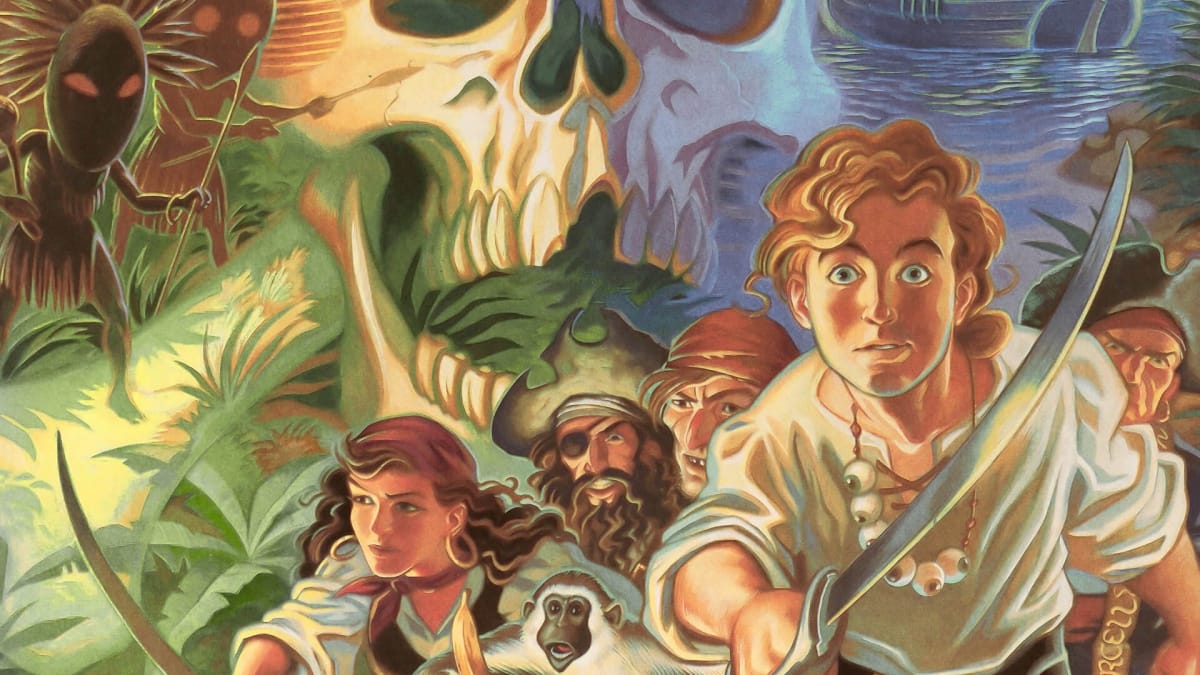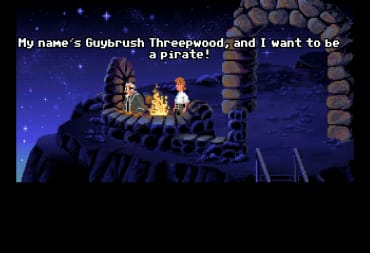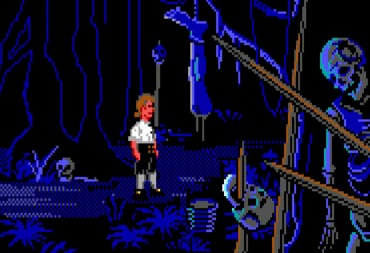The Secret of Monkey Island is one of the most popular adventure games ever made. Known for its humor, clever puzzles and gorgeous animations, The Secret of Monkey Island is perhaps the crown jewel of Adventure games from LucasArts, and its dream team of developers - Ron Gilbert, Tim Schafer and Dave Grossman - have gone on to become important figures in the whole industry.
What if, however, we find out that The Secret of Monkey Island originally had a lot more in it, that was changed during development? Thanks to the Video Game History Foundation, we now have unlocked those secrets in a full-blown expose on the game.
The VGHF last week posted an interview with Pete Armour for their new podcast, the Video Game History Hour. In it, Armour discusses the 30th anniversary of The Secret of Monkey Island, including the work on a documentary on the game and the uncovered bits of the game's development. To complement this, the VGHF did an extensive livestream interview with Ron Gilbert, the director of Monkey Island, to discuss the various changes the game had in development.
Much of the process for developing The Secret of Monkey Island focuses on minor graphical changes and enhancements based on artifacts found in the games code. This includes some lost animations, graphical enhancements, and using several in-house tools at LucasArts, from the FLEM, BYLE, SPIT tools to create 'costumes', or set of animations for the sprites in the game.
The best example of this is the famously popular insult swordfighting section. Originally, LucasArts was going to make it drunken insult swordfighting, and we even see a costumed sprite, drink in hand, drunkenly swinging his sword around. The reason it was cut though was simple; writing drunken dialogue for each reply in the game represented a challenge for the developers, so the concept was cut early in production, with the drunk swordfighter costume being the only remnant.
Tons of sprites shown were either cut animations or characters, from a different mayor character nicknamed mayor fat, to an oddball vulture wearing a skull and bones bib. The vulture was likely just early concept art from artist Steve Purcell, who was following Gilbert's instructions to 'just draw' whatever comes to mind, a mark of the pre-production on the game. We even see a few costume sprites of other LucasArts games, such as Sam and Max, which are believed to be in the code to practice using SCUMM, to a sprite of Layla Thomas, a character from an unreleased Spy Game called Top Secret, found in the files of another sprites costume animations.
Environments were also showcased, along with beta versions and explanations as to why they were changed. The SCUMM Bar kitchen, for example, was changed into two separate rooms instead of a continuous room, because of the cook, who Guybrush must sneak past in the game, wasn't quite working properly in the original room version.
We also saw deleted scenes and environments that for years have been long speculated by fans, including the infamous 'Trail' room. The Trail room was first revealed back in 1990 by LucasArts, and has been a point of speculation for nearly thirty years. The VGHF restored the Trail room, which had an atmospheric look to it, but very little to interact with. The speculation as to why the room was cut so late in development (as it had official artwork, and is even found in the 256-color VGA version of Monkey Island), is most likely due to saving disk space for the game itself.
The whole article is a treasure trove of changes and secrets, as well as some copies of Gilbert's notes and moving sprites that any fan of Monkey Island would enjoy searching through. Be sure to check out the entire article at the Video Game History Foundation website now.



